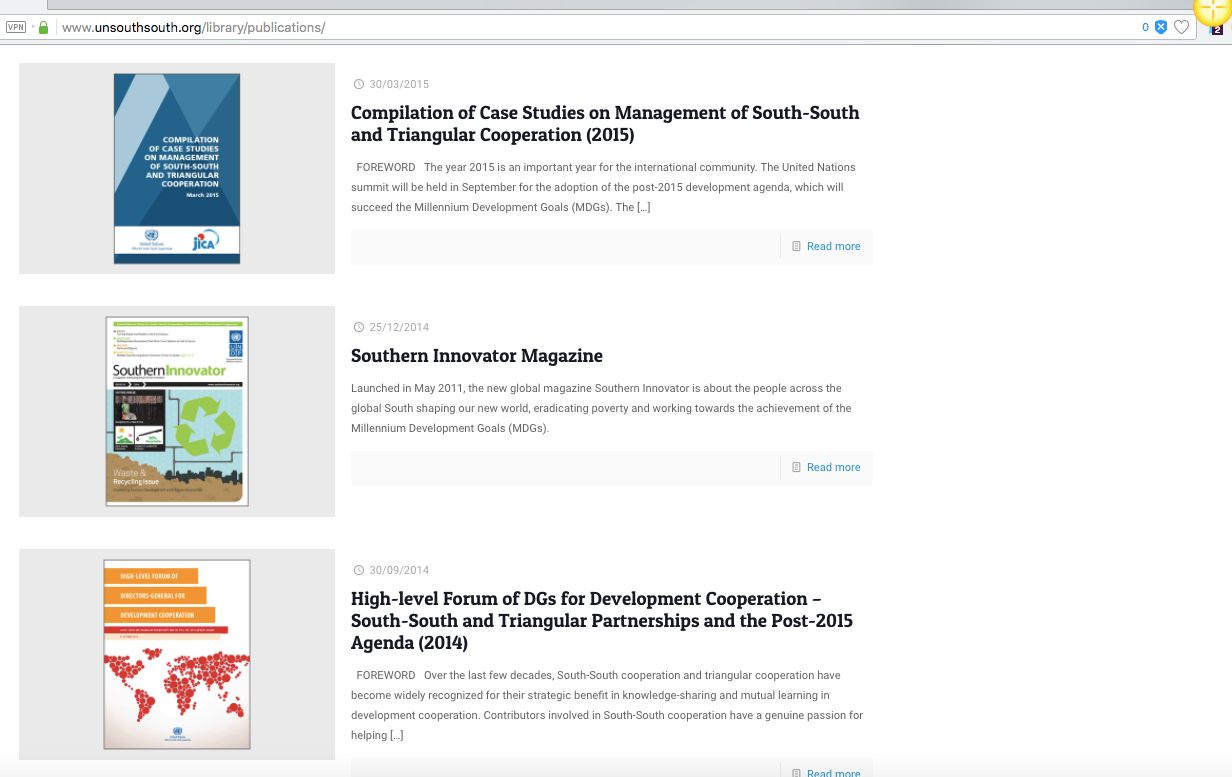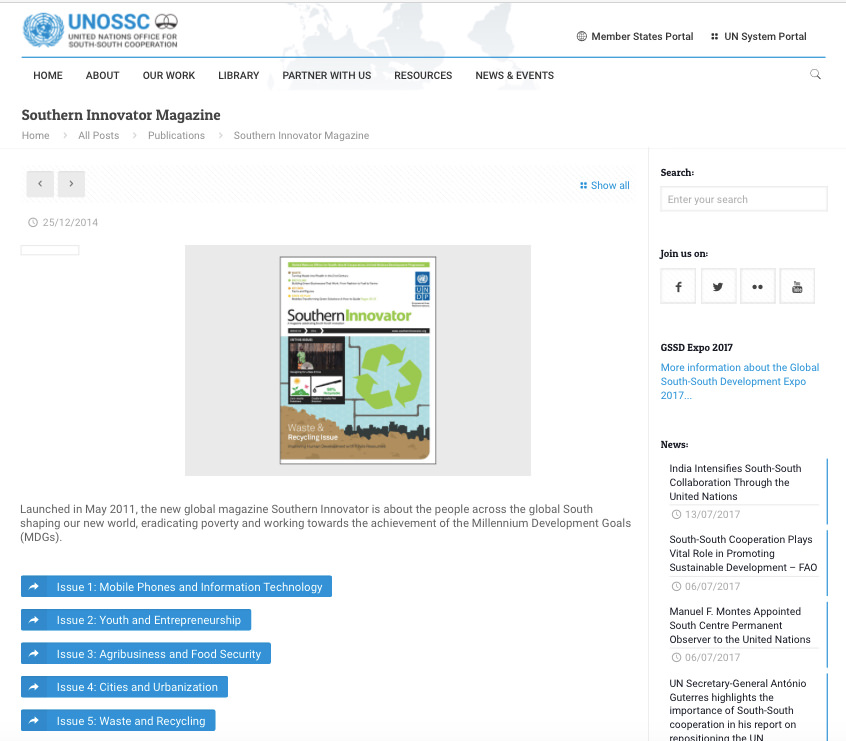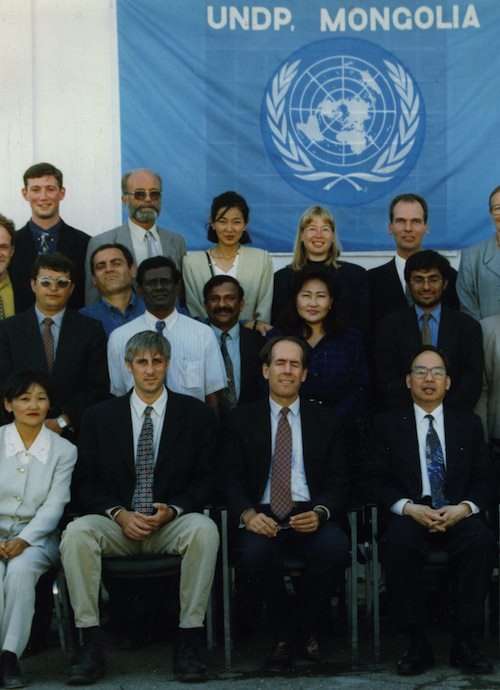Southern Innovator and the Growing Global Innovation Culture: Background Paper | 2013
 Thursday, November 30, 2017 at 11:05AM
Thursday, November 30, 2017 at 11:05AM 
Publisher: David South Consulting/David South International
Category: Background Paper
Published: July 2013
Client: United Nations Office for South-South Cooperation (UNOSSC)
Introduction
The topic of innovation is ever more frequently mentioned by policy-makers and politicians. Whole business schools dedicate themselves to the subject, while governments and international organizations now often set aside a department or division dedicated to innovation. The European Commission’s Innovation Union is one example (http:// ec.europa.eu/research/innovation-union/index_en.cfm).
This paper argues that the rise of a global innovation culture is not just hype, a marketing catch-phrase or the latest piece of government jargon. It is really happening and it is snowballing with the aid of the communications revolution. It is interlinking with increasing global trade links, extending to what were some of the most remote corners of the earth. Increasing urbanization is drawing people into new circumstances and causing chaos in many lives, but also spawning challenges that spur people to seek solutions.
The current global economic crisis which started in 2007/2008 seems to have accelerated this tendency as many question the validity and sustainability of the current economic paradigm and global structure. The over-reliance on debt to create prosperity (from housing bubbles to credit cards) has exposed the failure of many institutions, governments and companies - small and large - to innovate. The use of debt - rather than innovation - to create economic growth and prosperity leads to innumerable problems. Resources are not used efficiently (a serious problem on a finite planet with a growing population heading past 7 billion) (UN), and technological and scientific advances are held back as there is no incentive to change old ways when money is easy and cheap.
While many countries of the global North, particularly in Europe and North America, have experienced a severe economic crisis since 2007, the countries of the global South - while not in any way immune to the problems experienced by the global North - are experiencing a profound perception change.
The space created by the crisis in the North has directed investment wealth and attention towards the global South and emerging market countries. One of the more amusing manifestations of this has been the endless - and very creative - deployment of acronyms for each new investment opportunity, BRIC, CIVETS,etc. Countries and regions which were subject to decades of negative publicity - or just completely ignored - were now ‘sexy’.
In just eight years from 2000 to 2008, BRICs countries – Brazil, Russia, India, China and South Africa - saw their combined share of total world economic output rise from 16 to 22 percent. This led to a 30 percent increase in global output during the period, showing how key these countries were to global prosperity in the 21st Century. The BRIC (Brazil, Russia, India, China) countries make up nearly half the world’s population and are regional leaders. Taken together, their gross domestic products (GDPs) are not far behind the United States.
What's next?
Ruchir Sharma’s Breakout Nations: In Pursuit of the Next Economic Miracles (http:// www.amazon.com/Breakout-Nations-Pursuit-Economic-Miracles/dp/0393080269) argues that the BRICs are now entering a more stable growth path and thus will not see the rapid-fire expansion and quick profits investors have become used to in the past decade.
"The BRICs,” Sharma told Forbes magazine, “were last decade’s team.”
The buzz surrounding the BRICs countries over the past decade has been justified by their impressive growth rates, declining poverty levels, modernizing economies and societies and growing middle class populations.
China alone saw its gross domestic product grow by US$5 trillion between 2001 and 2011.
But other countries are now coming up. Sharma points out that Indonesia was the best performing emerging market in 2011 and has a GDP that will surpass a trillion dollars in the coming years.
He also believes Sri Lanka and Nigeria are economies to watch.
Sharma says funds flowing into emerging market stocks grew by 478 percent between 2005 and 2010, a huge jump compared to 2000 to 2005, when the total grew by 92 per cent.
Investors who watch the emerging markets predict the hot growth areas for the next decade will be around energy, technology, and agricultural resources. All are areas ripe for significant innovation.
To make sense of the complexity of fast-emerging economies, the flurry of new investor acronyms try to find the common attributes they share. One country cluster is called the CIVETS: Colombia, Indonesia, Vietnam, Egypt, Turkey, South Africa (http:// en.wikipedia.org/wiki/CIVETS). Another is PC-16 (Post-China16), comprising the16 countries best suited to succeed China as the world's low-cost, export-oriented economy hub - Bangladesh, Cambodia, the Dominican Republic, Ethiopia, Indonesia, Kenya, Laos, ...
Read the rest of the Background Paper online here: https://books.google.co.uk/books?id=omNnBgAAQBAJ&dq=southern+innovator+background+paper&source=gbs_navlinks_s
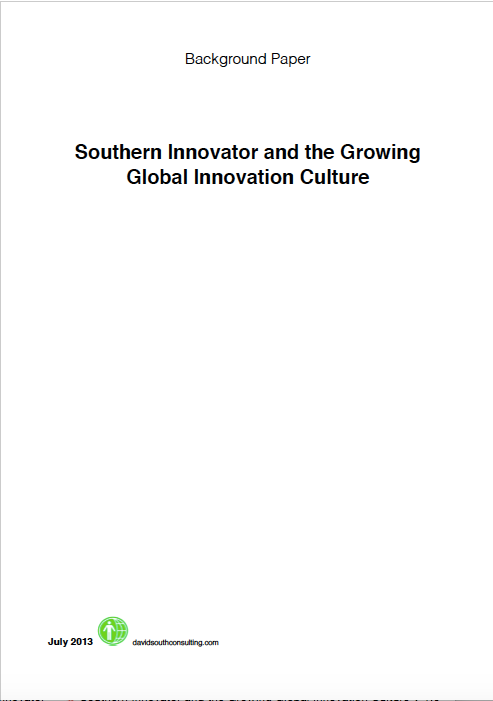 Background Paper for the United Nations Office for South-South Cooperation (UNOSSC).
Background Paper for the United Nations Office for South-South Cooperation (UNOSSC).
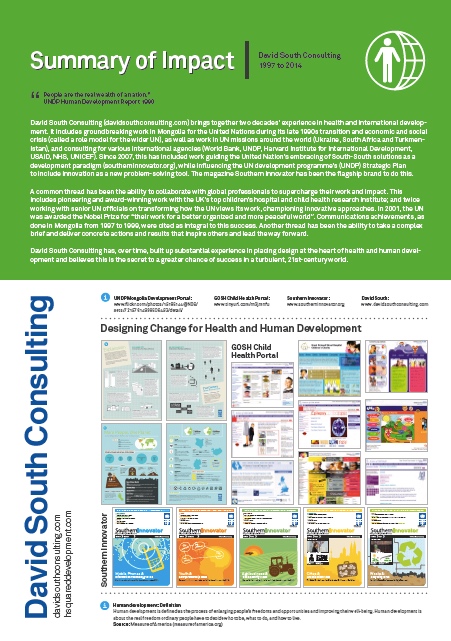
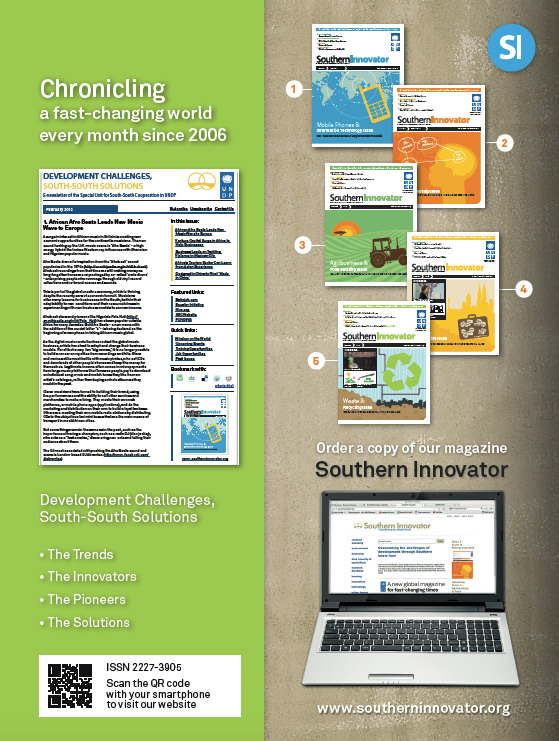

This work is licensed under a Creative Commons Attribution 4.0 International License.
ORCID iD: https://orcid.org/0000-0001-5311-1052.
© David South Consulting 2017
 2013,
2013,  BRICS,
BRICS,  Background Paper,
Background Paper,  David South,
David South,  Southern Innovator,
Southern Innovator,  UNDP,
UNDP,  UNOSSC,
UNOSSC,  United Nations,
United Nations,  United Nations Office for South-South Cooperation,
United Nations Office for South-South Cooperation,  global,
global,  innovation,
innovation,  innovation culture in
innovation culture in  21st century,
21st century,  Agenda 2030,
Agenda 2030,  Cosmas Gitta,
Cosmas Gitta,  Crisis Response Media,
Crisis Response Media,  David South Consulting,
David South Consulting,  Digital,
Digital,  Emerging Markets,
Emerging Markets,  Finance,
Finance,  GSSD,
GSSD,  GSSD Expo,
GSSD Expo,  Geopolitics,
Geopolitics,  Global South,
Global South,  Google,
Google,  Health and Human Development,
Health and Human Development,  Helen Clark,
Helen Clark,  Human Development Innovator,
Human Development Innovator,  ICT4D,
ICT4D,  International Development,
International Development,  Knowledge Sharing,
Knowledge Sharing,  Media,
Media,  Millennium Development Goals,
Millennium Development Goals,  Mobile Phones and Information Technology,
Mobile Phones and Information Technology,  Mobiles,
Mobiles,  Policy Innovator,
Policy Innovator,  Reverse engineering,
Reverse engineering,  Southern Innovator,
Southern Innovator,  Sustainable Development Goals,
Sustainable Development Goals,  UNOSSC,
UNOSSC,  United Nations,
United Nations,  Youth
Youth 

